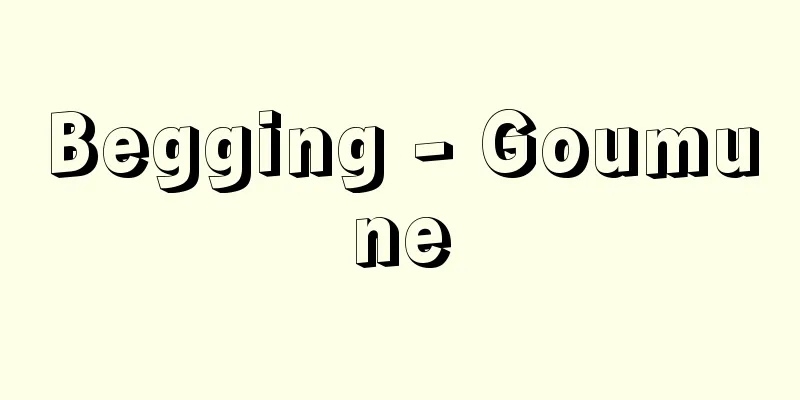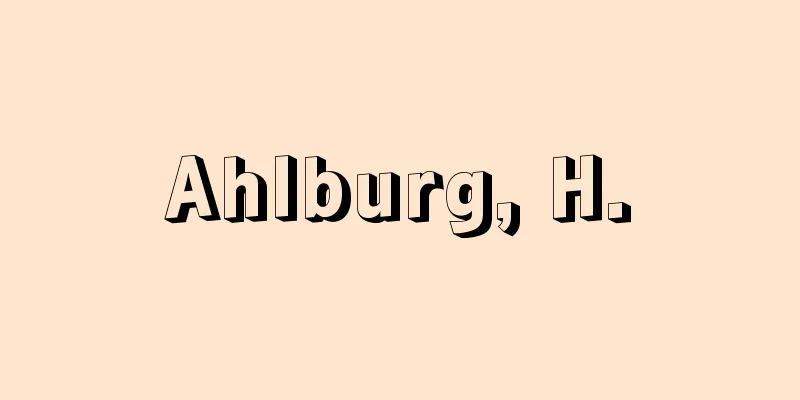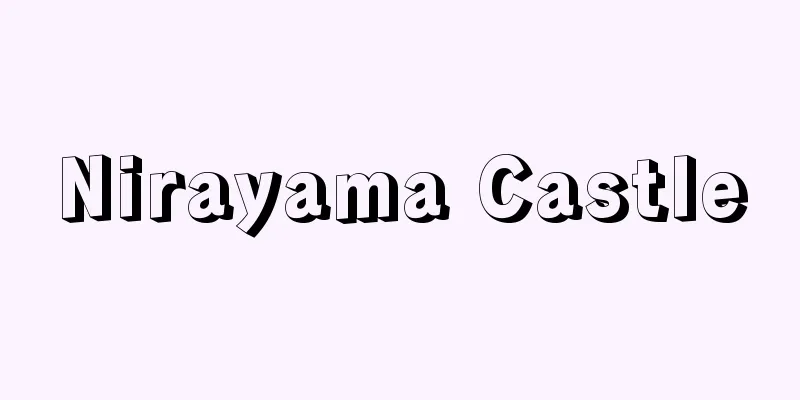Christian Democratic Union (English spelling)

|
Abbreviation: CDU (Czech Democratic Union). In the Federal Republic of Germany, it is a conservative national party that is one of the two major parties alongside the Social Democratic Party, a national party of reformists. In Europe, it is also a party that represents the political trend of Christian democracy in Europe after World War II, along with the Italian Christian Democratic Party. In Germany, there is a sister party of the same affiliation called the Christian Social Union (CSU) in Bavaria in southern Germany, and since February 1947, the two parties have maintained a close partnership to this day, so the two parties are usually referred to as the Christian Democratic Union/Christian Social Union (CDU/CSU). In the former German Democratic Republic (East Germany), there was also the Christian Democratic Union as one of the parties that made up the "United Front of Anti-Fascist Democratic Parties" under the leadership of the Socialist Unity Party of Germany. Historically, the origins of these two parties in Germany lie in the Center Party, which was born out of the struggle for self-defense by Catholics against Bismarck at the time of the founding of the Protestant-dominated Second Reich. At the time, Catholics were a large religious minority, making up one-third of the population in Germany (note that in West Germany, the population of the old and new denominations is roughly equal, due to the division of East and West Germany after World War II). The Center Party was also one of the strongest supporters of the Weimar Republic, Germany's "first republic," until it "voluntarily dissolved" under the threat of Hitler's state in July 1933. However, after the Second World War, the Christian Democratic Union in West Germany, while still based primarily on the Catholic Church and its followers, transformed into a supra-denominational "national party" that sought the support of all Christians. Furthermore, initially, under the influence of Christian trade unions and the Catholic left ("socialist" faction), it adopted the left-leaning "Ahlen Program" (February 1947), which aimed to overcome both "capitalism and Marxism," and showed a favorable attitude toward the "socialization" of important industries, and in fact, in 1951, it even cooperated with the Social Democratic Party to enact codetermination laws in the coal and steel industries. However, in post-war Germany, where Nazism had lost credibility along with other conservative and right-wing parties, the party over time came to represent the unity of all conservative forces opposing the Social Democratic Party. In the ruins of the post-war period, various organizations that had initially sprung up separately in several regions were unified, and the first Federal Party Congress was held in Goslar in October 1950. However, the party leadership was established early on, centered around K. Adenauer; even before this party conference, Adenauer had already become the first Chancellor when the Federal Republic was founded (September 1949), and for a time he established overwhelming authority, remaining in that position until October 1963 (he remained party leader until March 1966). Under Adenauer's leadership, the party, with its alliance with the Western bloc as a backdrop, pursued a course of rearmament and "German unification by force" within the framework of the North Atlantic Treaty Organization (NATO), while in terms of economic policy it pursued a "social market economy" as represented by L. Erhard (Minister of Economics from September 1949 to October 1963, and Chancellor from October 1963 to December 1966), who would become the driving force behind the "economic miracle" of the 1950s. Thus, the party maintained power for 17 years from the founding of the Federal Republic until December 1966, mainly in the form of a "small coalition" government in cooperation with the centrist Liberal Democratic Party. However, after that, the party fell from power after the grand coalition government (Chancellor K. Kiesinger) consisting of the two major parties, the party and the Social Democratic Party, which lasted from December 1966 to October 1969, but since October 1982, it has again formed a coalition government with the Liberal Democratic Party under Herbert Kohl. Chancellor Kohl, who was the driving force behind German unification in 1990 and the subsequent European Union (EU) project that was rushing towards European monetary integration, outlasted Adenauer's 14 years in the early post-World War II period and came close to the record of Bismarck's 19 years, but was defeated by the Social Democratic Party in the general election in September 1998 and resigned. During Kohl's time in power, the party strengthened its neoliberal influence, weakening its character as a "national party" that unites a wide range of people from all walks of life. Furthermore, with the unification of Germany, the previously Protestant region of East Germany was added, and the influence of Catholic politicians who had primarily advocated social policy considerations also declined, causing the party's identity to waver. The party leaders who succeeded Kohl, W. Schäuble (1998-2000) and A. Merkel (2000-), are both Protestants, the latter from East Germany. Due in part to these changes in the party, the combined vote share of the party and the Christian Social Union has not reached 40% since the 1994 election, but in the 2005 election, it narrowly returned to the top spot, and launched the Merkel government in a grand coalition with the Social Democrats. In the following 2009 election, the party's share of the vote declined but it maintained its position as the largest party, and it switched coalition partners to the Free Democratic Party and maintained power with Merkel as chancellor. As of the end of September 2008, the party had approximately 530,000 members (compared to 735,000 in 1983). Its sister party, the Christian Social Union, has its roots in the Bavarian People's Party during the Weimar era, and has not joined the Christian Democratic Union due to its insistence on maintaining its independence. It has separated itself from the Democratic Union by operating only in the state of Bavaria, and in the Bundestag it forms a united faction with the Democratic Union. Its political tendencies are more conservative and authoritarian than the Democratic Union, and for this reason it has put up a unified Democratic/Social Union candidate for chancellor twice in the past, but neither party achieved good results. It has boasted overwhelming strength in its home state of Bavaria, but its strength is showing signs of fading, as seen in the 2008 state election where it lost its majority. The party had 163,000 members in 2008. [Yamaguchi Sadao and Noda Shogo] "The Formation of Germany's Postwar Political and Economic Order" by Shogo Noda (1998, Yuhikaku)" ▽ "Christian Democracy and Western European Politics" edited by Akira Taguchi and Kanji Tsuchikura (2008, Motokusha)" ▽ "Democracy in Europe" edited by Ryusuke Amiya et al. (2009, Nakanishiya Publishing)" [References] | | | | |Source: Shogakukan Encyclopedia Nipponica About Encyclopedia Nipponica Information | Legend |
|
略称CDU(ツェーデーウー)。ドイツ連邦共和国において、革新派の国民政党である社会民主党と並んで二大政党の一翼を担う保守派の国民政党である。また、全ヨーロッパ的にみれば、イタリアのキリスト教民主党などとともに第二次世界大戦後のヨーロッパにおけるキリスト教民主主義の政治潮流を代表する政党でもある。ドイツでは、南ドイツのバイエルンにキリスト教社会同盟Christlich Soziale Union(略称CSU、ツェーエスウー)という同系列の姉妹政党があり、この両者が1947年2月以来今日に至るまで緊密な提携関係にあるため、通常この両党は、キリスト教民主同盟/社会同盟(CDU/CSU)という一体化した呼称でよばれる。また、かつてのドイツ民主共和国(東ドイツ)にも、ドイツ社会主義統一党の指導下に「反ファシズム民主主義政党の統一戦線」を構成する政党の一つとして「キリスト教民主同盟」があった。 歴史的にみれば、ドイツにおけるこの両党の起源は、プロテスタント優位の第二帝政の建国時に、ビスマルクに対抗するカトリック教徒の自己防衛の闘争が生み落とした中央党にある。カトリックは当時、ドイツ国内で人口の3分の1を占める宗教上の「大きな少数派」であった(なお、第二次世界大戦後の東西ドイツ分断により、西ドイツでは新旧両宗派の人口はほぼ拮抗(きっこう)する)。この中央党は、1933年7月にヒトラー国家の威圧のもとに「自発的解散」をするまで、ドイツの「最初の共和国」であったワイマール共和制の強力な支持勢力の一つでもあった。 しかし、第二次世界大戦後の西ドイツにおけるキリスト教民主同盟は、なおカトリック教会とその信徒を主たる基盤とするものの、同時に、すべてのキリスト教徒に支持を求める超宗派的な「国民政党」へと変貌(へんぼう)した。さらに最初は、キリスト教労働組合やカトリック左派(「社会」派)の影響下に「資本主義とマルクス主義」の双方を克服することを目標とする左寄りの「アーレン綱領」(1947年2月)を採択して重要産業の「社会化」に好意的な態度を示したり、現実に、1951年には社会民主党と協力して、石炭・鉄鋼産業における共同決定法を制定しさえしている。しかし、ナチズムとともにその他の保守政党、右翼政党まで一挙に信用を失ってしまっていた敗戦後のドイツでは、同党は、時とともに、社会民主党に対抗する保守派諸勢力の総結集を体現する政党になっていく。戦後の廃墟(はいきょ)のなかで当初いくつかの地域から別々に生まれた諸組織にまとまりがつけられ、最初の連邦党大会がゴスラーで開かれたのは1950年10月であるが、党指導部はK・アデナウアーを中心に早くから確立され、アデナウアーはすでにこの党大会の前に、連邦共和国の発足(1949年9月)とともに初代首相となり、一時は圧倒的な権威を確立して、1963年10月までその地位にとどまる(その後も1966年3月までは党首)。このアデナウアーの指導下に、同党は、対外的には西側陣営との提携を背景にして、北大西洋条約機構(NATO(ナトー))の枠内での再軍備と「力によるドイツ統一」の路線を、経済政策としては、1950年代の「経済の奇跡」の立役者となるL・エアハルト(1949年9月から1963年10月まで経済相、1963年10月から1966年12月まで首相)に代表される「社会的市場経済」を追求する。 こうして、同党は連邦共和国の発足以来1966年12月までの17年間、主として中間派の自由民主党と提携した「小連立」内閣の形で一貫して政権を維持し続ける。しかしその後は、1966年12月から1969年10月までの同党と社会民主党の二大政党による大連合内閣(首相K・キージンガー)を最後に、政権の座から転落したが、1982年10月以来、ふたたび自由民主党との連立によるH・コール政権を成立させた。首相コールは、1990年のドイツ統一ならびにその後の、ヨーロッパ通貨統合に向けて突進するヨーロッパ連合(EU)の事業の立役者として、第二次世界大戦後初期のアデナウアーの14年をしのぎ、かつてのビスマルクの19年の記録に迫る長期政権をつづけたが、1998年9月の総選挙で社会民主党に敗れ、退陣した。 このコール政権期に同党は新自由主義色を強め、幅広く国民諸階層を束ねる「国民政党」としての性格を希薄化させている。さらに、ドイツ統一により、プロテスタント地域であった東ドイツが加わったことで、社会政策的配慮を主として唱えてきたカトリック政治家の影響力も後退し、同党のアイデンティティには揺らぎがみられる。コールの後に党首となったW・ショイブレ(1998―2000)、A・メルケル(2000― )はともにプロテスタントであり、また後者は東ドイツ出身である。そうした党の変質もあって同党とキリスト教社会同盟の合計得票率は、1994年選挙以後、40%に達していないが、2005年選挙で僅差(きんさ)ながら第1党に返り咲き、社会民主党との大連立によるメルケル政権を発足させた。続く2009年選挙では得票率を減らしながらも第1党の座を守り、連立相手を自由民主党にかえてメルケルを首相として政権を維持している。党員数は2008年9月末で約53万人である(ちなみに1983年は73万5000人)。 同党の姉妹党であるキリスト教社会同盟は、ワイマール期のバイエルン人民党の系譜を引き、独自性の維持にこだわってキリスト教民主同盟には合流せず、バイエルン州でのみ展開するという形で民主同盟と住み分けを行い、連邦議会では民主同盟と統一会派を組んでいる。政治的傾向は民主同盟よりも保守色、権威主義色が強く、そのためもあり過去2回、民主・社会同盟の統一首相候補を出したが、いずれも芳しい結果を残せなかった。地元バイエルンでは圧倒的な強さを誇ってきたが、2008年の州議会選挙で過半数割れとなるなど、その強さにもやや陰りがみえてきている。2008年の党員数は16万3000人。 [山口 定・野田昌吾] 『野田昌吾著『ドイツ戦後政治経済秩序の形成』(1998・有斐閣)』▽『田口晃・土倉莞爾編著『キリスト教民主主義と西ヨーロッパ政治』(2008・木鐸社)』▽『網谷龍介他編『ヨーロッパのデモクラシー』(2009・ナカニシヤ出版)』 [参照項目] | | | | |出典 小学館 日本大百科全書(ニッポニカ)日本大百科全書(ニッポニカ)について 情報 | 凡例 |
<<: Christian History Association
>>: Christian Democratic Party (Italy)
Recommend
Itsuse no Mikoto
A god who appears in the Kojiki and Nihon Shoki. H...
Minobon
〘noun〙 A Japanese-bound book the size of a Mino pa...
Puerto Cortés
A city in northwestern Honduras, Central America. ...
Iwate Touki - Iwate Touki
...The fruit is elliptical and divided into two b...
Estimated decrease in income - Genshuu Suitei
This is a task carried out when forecasting yields...
Kawamata
...The people of Mikuriya, who were engaged in fi...
Higo Uprising
An uprising that occurred in the early modern peri...
Uneme Festival
...The Tale of Yamato records that Uneme, lamenti...
Sunbird (sun bird) - Sunbird (English spelling)
A general term for birds of the passerine order, f...
Aquarium - Suizokukan (English spelling) aquarium
A facility that breeds various aquatic creatures ...
Gosannen Kassen Emaki - Gosannen Kassen Emaki
A picture scroll depicting the Gosannen War (1083-...
Business Police - Eigyo Keisatsu
Police action to crack down on commercial, industr...
Stephanitis pyrioides (English spelling)
…[Masaaki Tomokuni]. . … *Some of the terminology...
Rokuhara Tandai
An institution established by the Kamakura Shogun...
John Vanbrugh
1664‐1726 He was one of the few English playwright...

![Sugawa [Hot Spring] - Sugawa](/upload/images/67cbf30370a6f.webp)







